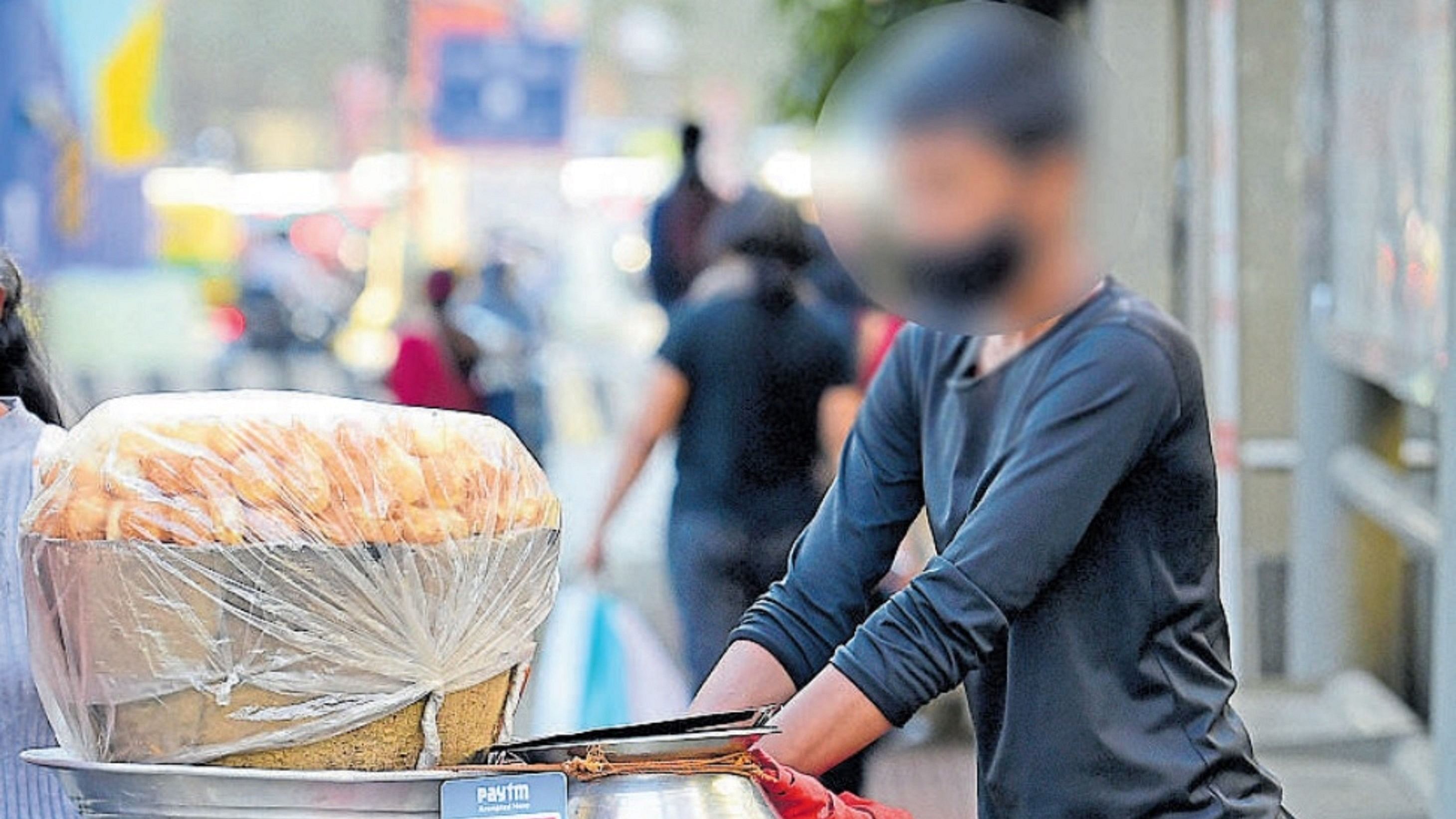
PIC FOR REPRESENTATION. DH PHOTO/RANJU P
Bengaluru: After cotton candy and gobi manchurian, pani puri is now under the scanner of the health authorities. They are flagging the street snack for its use of dyes and food additives.
Rhodamine B, a chemical compound found in synthetic dyes, was being used in gobi manchurian and cotton candy. It was banned by the Food Safety and Standards Authority of India (FSSAI) recently. The authorities have now found another compound, tartrazine, in samples of pani puri collected from across the state.
Dr Shalini Joshi, additional director of internal medicine and preventive medicine department at a private hospital, says, “Rhodamine B and tartrazine, the azo dye which is being discussed now, are known to cause liver cancer. Also, food-borne illnesses, caused by unhygienic surroundings and materials, are concerning when it comes to pani puri. These result in bacteria like salmonella and shigella, which can lead to jaundice and typhoid.”
She says street food uses uncooked materials, and with the scarcity of water, the utensils are suspect, too.
Bengaluru is home to a population that loves indulging in street food. An excess of artificial flavouring agents, food colours and additives is used to make ‘chaats’ and ‘kebabs’ look more appealing to them, says Edwina Raj, senior dietician at a private hospital.
Consumers could also catch food-borne illnesses if the water used in pani puri is unsafe. Natural colours and flavours made from beetroot, turmeric, and saffron are the need of the hour, she says.
Ramesh Agarwal, CEO of Food Safety Works, a Bengaluru-based food safety consultancy, says testing food is a good start to identifying harmful ingredients. There is a renewed focus on the use of colours nowadays as everyone wants to make their food look good, he says. “Some could be adding it into their food unknowingly due to a ‘masala’ or adulterated spice they are using,” he adds.
Pani puri is less prone to contamination by colour — the risks come from microbial contamination due to unhygienic handling, storage and service, he says.
“The report (about pani puri samples) does not clearly call out what they mean by ‘unfit for consumption’. The ultimate goal should be to fix the root cause and not just report it,” he says.
Should you give up eating pani puri? Dr Shalini recommends making it at home with natural ingredients and colours. Mint leaf and coriander add a green tinge to food, and chillies can add a red colour to it. Use RO, boiled, purified or packaged water to make it at home, she says.
The chutneys in pani puri can also be harmful due to the colours used in them. “A sprouts chaat, bhelpuri, fruit chaat, popcorn, or even corn on the cob is better,” Edwina adds.
Her advice: Avoid anything that is bright-coloured, sauces and toppings included. Avoid street vendors and opt to go to restaurants, which might be closely monitored by food authorities, she says.
If you are a ‘chaat’ fan, ideally opt for chickpea, peas, sprouts-based or cooked items rather than pani puri, says Ranjani Raman, chief dietician with Nutrition Tattva.
“Choose items that are mixed with a ladle or a spoon over anything prepared by hand. Choosing curd-based chaats will be easy on the gut,” she adds.
Look for shops that follow food safety practices and avoid use of bare hands. Ideally, they should be FSSAI-certified places, she adds.
What happened?
The FoodSafety and Standards Authority of India (FSSAI), Karnataka, found that 22% of pani puri samples tested failed to
meet quality standards.
A total of 260 samples were collected from across Karnataka, of which 41 were found to include artificial colours and cancer causing agents. FSSAI recently banned the use of artificial colours in the preparation of veg,
chicken, and fish kebabs.
What is the cancer-causing agent in Panipuri?
Tartrazine, a synthetic lemon yellow azo dye.
It is also used in sports and soft drinks.